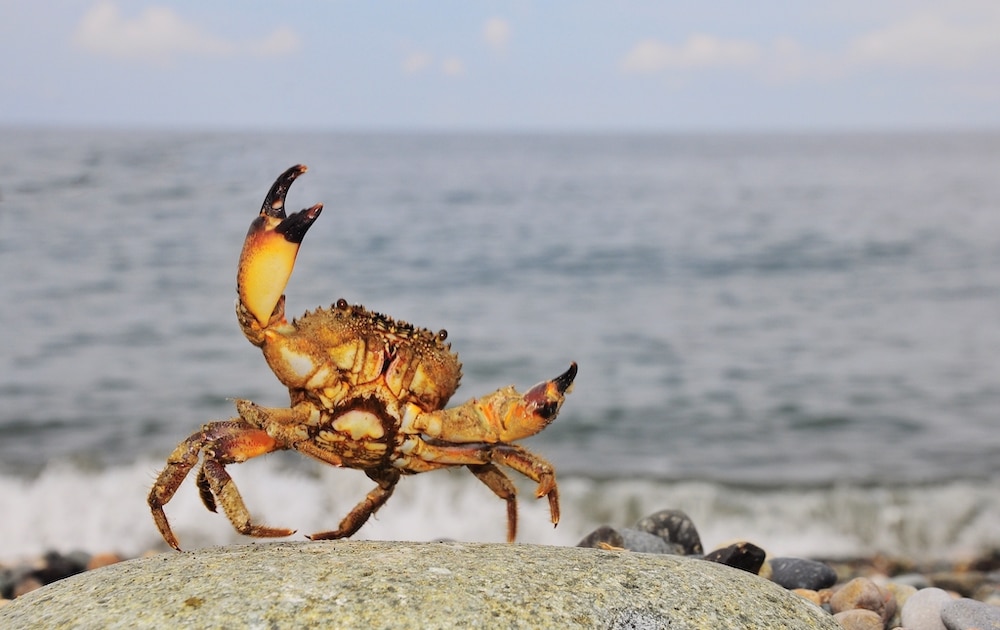Create a free profile to get unlimited access to exclusive videos, sweepstakes, and more!
Evolution keeps editing crabs, deleting and saving changes, but why?
The evolution of crabbiness, known as carcinization, has mysteriously been added and deleted many times.

Crawling out of evolution and de-evolution, crabs have been made and unmade as if nature constantly keeps creating them on a computer and going back.
What makes a crab a crab has changed 5 times or more in the past 250 million years. This phenomenon (the evolution of crabbiness), known as carcinization, has happened, and its loss, decarcinization is thought to have occurred at least seven times. Crabs keep gaining and losing definitive “crabby” features that are part of their body plans. Some started out crabbier than others and vice versa, but it seems that evolution can’t hit save on the final crab.
Carcinization fascinated Harvard University evolutionary biologist Joanna Wolfe so much that she wanted to see what was behind it. Convergent evolution — in which unrelated organisms in different locations evolve similar features — may be one culprit. Finding out what mechanism keeps pressing ctrl-alt-delete may reveal something more about this type of evolution. Wolfe led a study, recently published in Bioessays, on the crab conundrum.
“Carcinization might provide some big advantages to crabs, like improving their abilities to hide (because the body is just more compact), or perhaps allowing them to walk faster sideways,” Wolfe told SYFY WIRE. “These factors may be part of why the crab body has evolved several times.”
Both true crabs, which scuttle around on four pairs of legs, and false crabs, which walk on three pairs with a fourth pseudo-pair behind them, emerged from a common ancestor 350 million years ago. That seems like somewhere to start until you realize this ancestor was probably unrecognizable as a crab. Nobody even knows what kind of environment it lived in.
Crabs evolved, and sometimes de-evolved, crabby features on their own. Carcinization can be armor in one habitat and weakness in another. Sometimes, evolving to have the best chance at survival may have meant decarcinizaiton of previously carcinized species. They are definitely a poster child for convergent evolution. If they made it that long, through drastic changes in the environment and mass extinction that took out most life-forms on Earth, evolution had to be doing something right in its editing program.
Ever had king crab legs? These crabs carcinized on their own and thrive in freezing waters. Sand and mole crabs were never carcinized and somehow still considered false crabs. Other crabs’ ancestors were not carcinized, but there must have been advantages to carcinization that eventually made evolution edit it in. At the opposite extreme are frog crabs, which are often considered primitive and spawned from a carcinized ancestor. Their crabbiness is getting deleted for some reason as they morph into shapes that resemble warped lobsters.
“Frog crabs share similar habitats with mole and sand crabs,” Wolfe said. “Both of those groups burrow in the sand, where there are fewer hiding places than the structures of reefs that the nice flat crabby body fits into. They might both burrow in sand, but have different lifestyles.”
They couldn’t be more different. Frog crabs hide in the sand and ambush their prey, while mole and sand crabs search for plankton in the sand and use their antennae to shove it in their mouths. This doesn’t just happen in crabs that were either decarcinized or never carcinized. Both true and false crabs that are carcinized will also share habitats for different reasons, except carcinization is an asset to living in these habitats as opposed to the lack thereof. The hairy stone crab is a Hulk of a crab that lives on the same rocky beaches as some porcelain crabs.
“I definitely think there is an interplay of genes and environment, where convergent evolution is like nature's own set of experimental replicates,” said Wolfe.
Just watch that you don’t end up getting your finger stuck in those pincers.


























